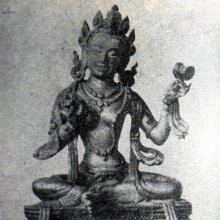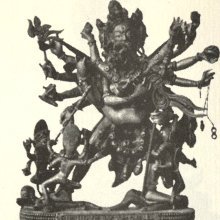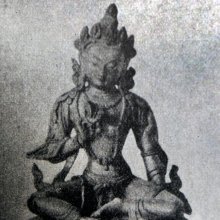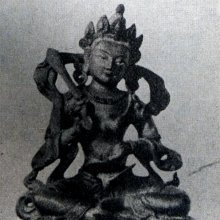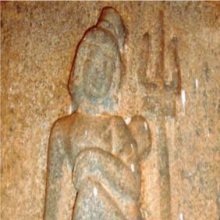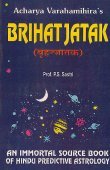Mina, Mīna, Mīnā, Mīṉā: 30 definitions
Introduction:
Mina means something in Buddhism, Pali, Hinduism, Sanskrit, the history of ancient India, Marathi, Jainism, Prakrit, Hindi, Tamil. If you want to know the exact meaning, history, etymology or English translation of this term then check out the descriptions on this page. Add your comment or reference to a book if you want to contribute to this summary article.
Alternative spellings of this word include Meen.
Images (photo gallery)
(+1 more images available)
In Hinduism
Dharmashastra (religious law)
Source: Wisdom Library: Dharma-śāstraMīna (मीन) refers to “fish”. The word is used throughout Dharmaśāstra literature such as the Manusmṛti. (See the Manubhāṣya, verse 11.68)

Dharmashastra (धर्मशास्त्र, dharmaśāstra) contains the instructions (shastra) regarding religious conduct of livelihood (dharma), ceremonies, jurisprudence (study of law) and more. It is categorized as smriti, an important and authoritative selection of books dealing with the Hindu lifestyle.
Purana and Itihasa (epic history)
Source: Cologne Digital Sanskrit Dictionaries: The Purana Index1) Mīna (मीन).—The Tamil month of Panguni: Sūrya in the month of.*
- * Vāyu-purāṇa 105. 46.
2) Mīnā (मीना).—A daughter of Ṛṣā; gave birth to fishes—makara, pāṭhina, and timirohita.*
- * Brahmāṇḍa-purāṇa III. 7. 414-5; Vāyu-purāṇa 69. 291-2.

The Purana (पुराण, purāṇas) refers to Sanskrit literature preserving ancient India’s vast cultural history, including historical legends, religious ceremonies, various arts and sciences. The eighteen mahapuranas total over 400,000 shlokas (metrical couplets) and date to at least several centuries BCE.
Natyashastra (theatrics and dramaturgy)
Source: archive.org: Natya ShastraMīna (मीन).—Description of a women of fish (mīna) type;—A woman who has long, large and high breasts, is fickle and without any twinkle in her eyes, has many servants and offsprings, is fond of water, is said to have the nature of a fish (mīna or matsya).

Natyashastra (नाट्यशास्त्र, nāṭyaśāstra) refers to both the ancient Indian tradition (shastra) of performing arts, (natya—theatrics, drama, dance, music), as well as the name of a Sanskrit work dealing with these subjects. It also teaches the rules for composing Dramatic plays (nataka), construction and performance of Theater, and Poetic works (kavya).
Vastushastra (architecture)
Source: Wisdom Library: Vāstu-śāstraMīna (मीन) corresponds with the Pisces zodiac sign and refers to the twelfth and last of twelve rāśi (zodiacal sign), according to the Mānasāra. Rāśi is one of the three alternative principles, besides the six āyādiṣaḍvarga, used to constitute the “horoscope” of an architectural or iconographic object. Their application is intended to “verify” the measurements of the architectural and iconographic object against the dictates of astrology that lay out the conditions of auspiciousness.
The particular rāśi (e.g., mīna) of all architectural and iconographic objects (settlement, building, image) must be calculated and ascertained. This process is based on the principle of the remainder. An arithmetical formula to be used in each case is stipulated, which engages one of the basic dimensions of the object (breadth, length, or perimeter/circumference). All twelve rāśis, except the eighth (vṛścika) are auspicious.

Vastushastra (वास्तुशास्त्र, vāstuśāstra) refers to the ancient Indian science (shastra) of architecture (vastu), dealing with topics such architecture, sculpture, town-building, fort building and various other constructions. Vastu also deals with the philosophy of the architectural relation with the cosmic universe.
Yoga (school of philosophy)
Source: Wisdom Library: YogaMīna is one of the eighty-four Siddhas associated with eighty-four Yogic postures (āsanas), according to popular tradition in Jodhpur, Rājasthān. These posture-performing Siddhas are drawn from illustrative sources known as the Nava-nātha-caurāsī-siddha from Vȧrāṇasī and the Nava-nātha-caruāsī-siddha-bālāsundarī-yogamāyā from Puṇe. They bear some similarity between the eighty-four Siddhas painted on the walls of the sanctum of the temple in Mahāmandir.
The names of these Siddhas (e.g., Mīna) to 19th-century inscription on a painting from Jodhpur, which is labelled as “Maharaja Mansing and eighty-four Yogis”. The association of Siddhas with yogis reveals the tradition of seeing Matsyendra and his disciple Gorakṣa as the founders of haṭhayoga.

Yoga is originally considered a branch of Hindu philosophy (astika), but both ancient and modern Yoga combine the physical, mental and spiritual. Yoga teaches various physical techniques also known as āsanas (postures), used for various purposes (eg., meditation, contemplation, relaxation).
Jyotisha (astronomy and astrology)
Source: Wisdom Library: Brihat Samhita by VarahamihiraMīna (मीन) refers to the sign of Pisces, according to the Bṛhatsaṃhitā (chapter 5), an encyclopedic Sanskrit work written by Varāhamihira mainly focusing on the science of ancient Indian astronomy astronomy (Jyotiṣa).—Accordingly, “If the sun and moon should begin to be eclipsed when only half risen, deceitful men will suffer as well as sacrificial rites. [...] If they should be eclipsed when in the sign of Aquarius (Kumbha), hill men, men of western countries, carriers, robbers, shephards, serpents, worthy men, lions, citizens and the people of Barbara will perish. If when in the sign of Pisces (Mīna), the products of the sea beach and of the sea, man of respectability and of learning and persons that live by water will suffer. Also those provinces will be affected which correspond to particular lunar mansions in which the eclipses happen to occur, as will be explained in the chapter (14) on Kūrmavibhāga”.
Source: Wikibooks (hi): Sanskrit Technical TermsMīna (मीन).—Sign Pisces. Note: Mīna is a Sanskrit technical term used in ancient Indian sciences such as Astronomy, Mathematics and Geometry.

Jyotisha (ज्योतिष, jyotiṣa or jyotish) refers to ‘astronomy’ or “Vedic astrology” and represents the fifth of the six Vedangas (additional sciences to be studied along with the Vedas). Jyotisha concerns itself with the study and prediction of the movements of celestial bodies, in order to calculate the auspicious time for rituals and ceremonies.
Vaishnavism (Vaishava dharma)
Source: Pure Bhakti: Arcana-dipika - 3rd EditionMīna (मीन) corresponds to “pisces” (mid March to mid April) and refers to one of the zodiac signs (rāśī) in the Vedic calendar.—Rāśī refers to the different signs of the zodiac through which the sun travels. For precise dates, please refer to a Vedic calendar. In accordance with the zodiac sign the sun is situated in, one would utter [for example, mīna-rāśī sthite bhāskare]

Vaishnava (वैष्णव, vaiṣṇava) or vaishnavism (vaiṣṇavism) represents a tradition of Hinduism worshipping Vishnu as the supreme Lord. Similar to the Shaktism and Shaivism traditions, Vaishnavism also developed as an individual movement, famous for its exposition of the dashavatara (‘ten avatars of Vishnu’).
Shaktism (Shakta philosophy)
Source: Google Books: Manthanabhairavatantram1) Mīna (मीन) refers to Matsyendranātha, according to the second recension of the Yogakhaṇḍa of the Manthānabhairavatantra, a vast sprawling work that belongs to a corpus of Tantric texts concerned with the worship of the goddess Kubjikā.—Accordingly, as Śrīnātha (i.e., Bhairava) said to the Goddess: “[...] Once the scripture of (that) mountain (śilāgama) [i.e., the mountain (śilā) (of the Triangle)] , Kula and Kaula was worshipped there with devotion, the great goddess was worshipped and lauded by men and the rest. The one called Mīna (i.e. Matsyendranātha) was present there. He became fully accomplished (siddha) there in that House”.
2) Mīna (मीन) refers to one of the disciples of Śrīkaṇṭha, who is associated with Kāmarūpa, one of the sacred seats (pīṭha), according to the Manthānabhairavatantra.—The colophons of the version of the Śrīmatottara called Gorakṣasaṃhitā declare that the Kubjikā tradition (the Kādibheda) of the Kulakaulamata was brought down to earth by him. Thus like the Siddhas of the previous Ages, Śrīkaṇṭha also had disciples [i.e., Mīna]. These were the Lords of the Ages who are said to be four aspects of the First Siddha who descend into the world in the last Age, each into a ‘particular division’.

Shakta (शाक्त, śākta) or Shaktism (śāktism) represents a tradition of Hinduism where the Goddess (Devi) is revered and worshipped. Shakta literature includes a range of scriptures, including various Agamas and Tantras, although its roots may be traced back to the Vedas.
Shaivism (Shaiva philosophy)
Source: Google Books: Manthanabhairavatantram (shaivism)Mīna (मीन) or Mīnanātha is another name for Matsyendranātha, one of the “four Lords (teachers) of the Ages” (Yuganātha).—Matsyendranātha is worshipped as the teacher of this Age along with three other teachers and their consorts who brought the Kaula Tantra into the world in the previous three Ages. These four Lords of the Ages (yuganātha) are highly revered in the Kālīkrama and came to be considered to be embodiments of the basic states of consciousness. Matsyendranātha has a variety of cognate names [e.g., Mīnanātha] (Cf. Dyczkowski 1988: 163 n23 and Bagchi 1934: 9).

Shaiva (शैव, śaiva) or Shaivism (śaivism) represents a tradition of Hinduism worshiping Shiva as the supreme being. Closely related to Shaktism, Shaiva literature includes a range of scriptures, including Tantras, while the root of this tradition may be traced back to the ancient Vedas.
In Buddhism
Tibetan Buddhism (Vajrayana or tantric Buddhism)
Source: Wisdom Library: Tibetan BuddhismMīna (मीन) is the name of a Rāśi (zodiac sign) mentioned as attending the teachings in the 6th century Mañjuśrīmūlakalpa: one of the largest Kriyā Tantras devoted to Mañjuśrī (the Bodhisattva of wisdom) representing an encyclopedia of knowledge primarily concerned with ritualistic elements in Buddhism. The teachings in this text originate from Mañjuśrī and were taught to and by Buddha Śākyamuni in the presence of a large audience (including Mīna).
Source: BDK Tripiṭaka: The Susiddhikara-sūtraMīna (मीन) refers to one of the various types of cakes mentioned in Chapter 12 (“offering food”) of the Susiddhikara-sūtra. Accordingly, “Offer [viz., mīna cakes], [...]. Cakes such as the above are either made with granular sugar or made by mixing in ghee or sesamum oil. As before, take them in accordance with the family in question and use them as offerings; if you offer them up as prescribed, you will quickly gain success. [...]”.
When you wish to offer food [viz., mīna cakes], first cleanse the ground, sprinkle scented water all around, spread out on the ground leaves that have been washed clean, such as lotus leaves, palāśa (dhak) leaves, and leaves from lactescent trees, or new cotton cloth, and then set down the oblatory dishes. [...] First smear and sprinkle the ground and then spread the leaves; wash your hands clean, rinse out your mouth several times, swallow some water, and then you should set down the food [viz., mīna]. [...]

Tibetan Buddhism includes schools such as Nyingma, Kadampa, Kagyu and Gelug. Their primary canon of literature is divided in two broad categories: The Kangyur, which consists of Buddha’s words, and the Tengyur, which includes commentaries from various sources. Esotericism and tantra techniques (vajrayāna) are collected indepently.
India history and geography
Source: archive.org: Ceylon Branch of the Royal Asiatic Society 1963Mina is the name of a tank mentioned Mihintale tablets of Mahinda IV (956-972). It represents a locality that once existed in the ancient kingdom of Anurādhapura, Ceylon (Sri Lanka).

The history of India traces the identification of countries, villages, towns and other regions of India, as well as mythology, zoology, royal dynasties, rulers, tribes, local festivities and traditions and regional languages. Ancient India enjoyed religious freedom and encourages the path of Dharma, a concept common to Buddhism, Hinduism, and Jainism.
Languages of India and abroad
Pali-English dictionary
Source: BuddhaSasana: Concise Pali-English Dictionarymīna : (m.) a fish.

Pali is the language of the Tipiṭaka, which is the sacred canon of Theravāda Buddhism and contains much of the Buddha’s speech. Closeley related to Sanskrit, both languages are used interchangeably between religions.
Marathi-English dictionary
Source: DDSA: The Molesworth Marathi and English Dictionaryminā (मिना).—m ( P) Enamel.
--- OR ---
minā (मिना).—ad ( A From that.) Deducted or allowed for; considered in settling the account--a sum advanced, a quantity furnished. Ex. śambhara rupayē dēṇēṃ tyānta tētīsa minā ghātalē. 2 Deducted or subtracted in general.
--- OR ---
mīna (मीन).—m (S) A fish. 2 The sign Pisces.
Source: DDSA: The Aryabhusan school dictionary, Marathi-Englishminā (मिना).—m Enamel. ad Deducted or allowed of.
--- OR ---
mīna (मीन).—m A fish. The sign Pisces.
Marathi is an Indo-European language having over 70 million native speakers people in (predominantly) Maharashtra India. Marathi, like many other Indo-Aryan languages, evolved from early forms of Prakrit, which itself is a subset of Sanskrit, one of the most ancient languages of the world.
Sanskrit dictionary
Source: DDSA: The practical Sanskrit-English dictionaryMīna (मीन).—[mī-nak]
1) A fish; सुप्तमीन इव ह्रदः (suptamīna iva hradaḥ) R.1.73; मीनो नु हन्त कतमां गतिमभ्युपैतु (mīno nu hanta katamāṃ gatimabhyupaitu) Bv.1.17.
2) The twelfth sign of the zodiac (Pisces).
3) The first incarnation of Viṣṇu; see मत्स्यावतार (matsyāvatāra).
-nā A stick.
Derivable forms: mīnaḥ (मीनः).
Source: Cologne Digital Sanskrit Dictionaries: Shabda-Sagara Sanskrit-English DictionaryMīna (मीन).—m.
(-naḥ) 1. A fish 2. The sign of the Zodiac Pisces. 3. Vishnu in his first incarnation. E. mī to hurt, Unadi aff. nak .
Source: Cologne Digital Sanskrit Dictionaries: Benfey Sanskrit-English DictionaryMīna (मीन).— (probably vb. mih), m. 1. A fish, [Pañcatantra] ii. [distich] 3. 2. The sign of the zodiac, Pisces.
Source: Cologne Digital Sanskrit Dictionaries: Cappeller Sanskrit-English DictionaryMīna (मीन).—[masculine] fish, poss. vant.
Source: Cologne Digital Sanskrit Dictionaries: Aufrecht Catalogus CatalogorumMīna (मीन) as mentioned in Aufrecht’s Catalogus Catalogorum:—a teacher of yoga. Mentioned Oxf. 101^a. 233^b. See Mīnanātha.
Source: Cologne Digital Sanskrit Dictionaries: Monier-Williams Sanskrit-English Dictionary1) Mīna (मीन):—m. (derivation [from] √1. mī very doubtful in spite of [Uṇādi-sūtra iii, 3, ]) a fish, [Manu-smṛti; Mahābhārata] etc.
2) the sign of the zodiac Pisces, [Rāmāyaṇa; Varāha-mihira’s Bṛhat-saṃhitā; Purāṇa]
3) Name of a teacher of Yoga, [Catalogue(s)]
4) Mīnā (मीना):—[from mīna] f. a stick, [cf. Lexicographers, esp. such as amarasiṃha, halāyudha, hemacandra, etc.]
5) [v.s. ...] Name of a daughter of Uṣā and wife of Kaśyapa, [Purāṇa]
Source: Cologne Digital Sanskrit Dictionaries: Yates Sanskrit-English DictionaryMīna (मीन):—(naḥ) 1. m. A fish; sign Pisces.
Source: DDSA: Paia-sadda-mahannavo; a comprehensive Prakrit Hindi dictionary (S)Mīna (मीन) in the Sanskrit language is related to the Prakrit word: Mīṇa.
[Sanskrit to German]
Sanskrit, also spelled संस्कृतम् (saṃskṛtam), is an ancient language of India commonly seen as the grandmother of the Indo-European language family (even English!). Closely allied with Prakrit and Pali, Sanskrit is more exhaustive in both grammar and terms and has the most extensive collection of literature in the world, greatly surpassing its sister-languages Greek and Latin.
Hindi dictionary
Source: DDSA: A practical Hindi-English dictionary1) Mīna (मीन) [Also spelled meen]:—(nf) a fish, Pisecs—the twelth sign of the zodiac; ~[ketana/~ketu/~dhvaja] Cupid-the god of love; -[mekha karanā/nikālanā] to fiddle-faddle, to find faults, to pick holes in.
2) Mīnā (मीना):—(nm) blue colour; a false gem of blue colour; enamel; ~[kāra] an enameller; ~[kārī] enamelling; —[bājāra] a fancy fair.
...
Prakrit-English dictionary
Source: DDSA: Paia-sadda-mahannavo; a comprehensive Prakrit Hindi dictionaryMīṇa (मीण) in the Prakrit language is related to the Sanskrit word: Mīna.
Prakrit is an ancient language closely associated with both Pali and Sanskrit. Jain literature is often composed in this language or sub-dialects, such as the Agamas and their commentaries which are written in Ardhamagadhi and Maharashtri Prakrit. The earliest extant texts can be dated to as early as the 4th century BCE although core portions might be older.
Kannada-English dictionary
Source: Alar: Kannada-English corpusMīṇa (ಮೀಣ):—[noun] the act of bathing.
--- OR ---
Mīna (ಮೀನ):—
1) [noun] = ಮೀನು [minu]2.
2) [noun] a set of two similar things considered as a unit; a pair.
3) [noun] (astron.) a large faint zodiacal constellation; between Aquarius and Aries; the Pisces.
4) [noun] the twelfth sign of the zodiac; the Pisces.
5) [noun] ಮೀನ ಮೇಷ [mina mesha] mīna meśsha the state of hesitancy; hesitation or indecision; ಮೀನ ಮೇಷ ಎಣಿಸು [mina mesha enisu] mīna meśsha eṇisu to pause in or postpone acting, choosing or deciding something, etc. because of indecision or of being unsure.
Kannada is a Dravidian language (as opposed to the Indo-European language family) mainly spoken in the southwestern region of India.
Tamil dictionary
Source: DDSA: University of Madras: Tamil LexiconMīṉā (மீனா) noun A kind of hard wood, Spondia aurentalis; வயிரமுள்ள மரவகை. [vayiramulla maravagai.] (Nels.)
Tamil is an ancient language of India from the Dravidian family spoken by roughly 250 million people mainly in southern India and Sri Lanka.
See also (Relevant definitions)
Starts with (+88): Min-ampucci, Mina-mekha, Mina-pacasa, Minaboder, Minaccani, Minadhavanatoya, Minadhavanatoyagandha, Minadhvaja, Minadvaya, Minagandha, Minagandhika, Minagara, Minaghatin, Minagodhika, Minaha, Minahu, Minaja, Minajaniba, Minaju balli, Minaka.
Ends with (+132): Ahiramina, Alamkarmina, Alankarmina, Alankarmmina, Amina, Anugamina, Anukamina, Anumina, Anushtupkarmina, Athyrium filix-femina, Aumina, Awiafu samina, Awiemfo samina, Awiemfo semina, Awiemfosamina, Balsamina, Banmina, Belumina, Bhamina, Bharajamina.
Full-text (+131): Minaketana, Minaghatin, Minalaya, Gomina, Minagodhika, Minanda, Nalamina, Minaranga, Nadamina, Minakshi, Minara, Minaratha, Minaranka, Minanetra, Minagandha, Minadhvaja, Mainala, Mahamina, Minaraja, Minamrina.
Relevant text
Search found 34 books and stories containing Mina, Mīna, Mīnā, Minā, Mīṇa, Mīṉā, Meenaa; (plurals include: Minas, Mīnas, Mīnās, Minās, Mīṇas, Mīṉās, Meenaas). You can also click to the full overview containing English textual excerpts. Below are direct links for the most relevant articles:
Garga Samhita (English) (by Danavir Goswami)
Verse 6.1.28 < [Chapter 1 - Jarāsandha’s Defeat]
Verse 2.14.24 < [Chapter 14 - Description of Kāliya’s Story]
Verse 2.14.26 < [Chapter 14 - Description of Kāliya’s Story]
Puranic encyclopaedia (by Vettam Mani)
The civilization of Babylonia and Assyria (by Morris Jastrow)
Part IV < [Chapter VI - Law And Commerce]
Part XV < [Chapter VI - Law And Commerce]
Part VI < [Chapter VI - Law And Commerce]
The Indian Buddhist Iconography (by Benoytosh Bhattachacharyya)
Manasara (English translation) (by Prasanna Kumar Acharya)
Chapter 64 - The comparative measures of images (pratimā)
Chapter 6 - The rules for erecting gnomoms and pegs
Chapter 37 - The opening of the dwelling house (gṛha-praveśa)
Brihad Bhagavatamrita (commentary) (by Śrī Śrīmad Bhaktivedānta Nārāyana Gosvāmī Mahārāja)
Verse 2.1.74 < [Chapter 1 - Vairāgya (renunciation)]
Related products
